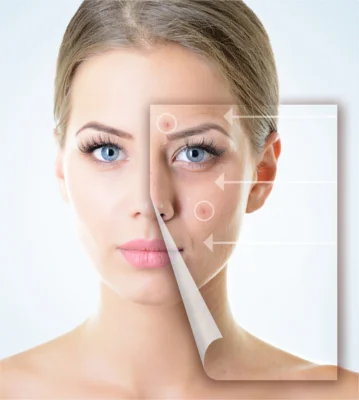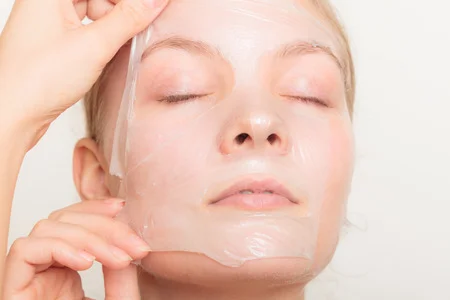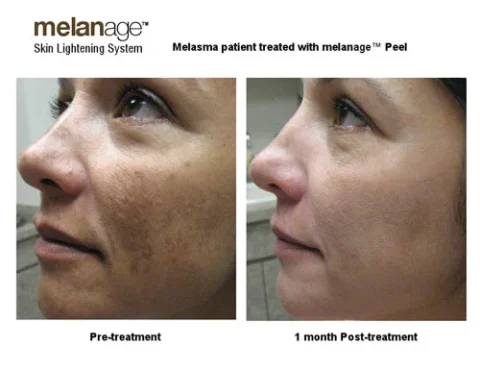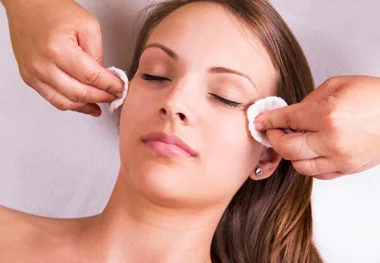Pregnancy can have many effects on the body, but one of the most apparent changes will show up in the skin. Because of the shifting hormone levels, stress, demands of the fetus, and other pregnancy-related concerns, women will often experience a decrease in their general appearance, especially in the latter half of their pregnancy. As a result, some pregnant and breastfeeding women look for skin treatments that can revitalize their looks.
But are there any cosmetic treatments that are safe and effective for pregnant and breastfeeding women? Skin treatments that don’t penetrate the dermal layer or are minimally invasive are excellent choices, but data and clinical trials with other procedures like laser treatments are more uncertain. Patients should always consult with their doctor and dermatologist for further clarification.
Are There Safe Cosmetic Treatments For Pregnant And Breastfeeding Women?
Because of the increased sensitivity that women experience during pregnancy and breastfeeding, most clinical skin treatments are usually not allowed. While skin treatments differ somewhat from most clinical treatments that involve drugs, they can still have considerable effects on a woman’s body, which can affect a developing fetus.
However, most dermatologists and doctors will usually allow skin treatments that aren’t too invasive or use drugs that can flow into the bloodstream. Based on research and experience, only one skin treatment safely falls under this category: certain chemical peels that use glycolic and lactic acid. Here are the considerations to keep in mind when using them:
How this skin treatment works
Products and serums that contain glycolic acid are very popular with clinical and skin treatments since it’s an effective exfoliant that can also reduce the appearance of wrinkles and fine lines on your face. They’ve also shown some efficacy in treating acne – a common side effect of pregnancy – in clinical trials, since they contain powerful antioxidants and antibacterial compounds.
Lactic acid is a naturally-occurring compound that helps treat skin pigmentation and wrinkles. It’s gentle on sensitive skin and doesn’t linger after application, which reduces the likelihood that it’ll penetrate the dermal layer. These peels are also relatively safe to use during pregnancy or breastfeeding, though most patients are advised against long-term treatments.
Why this skin treatment is safe for pregnant or breastfeeding women
Most scientists agree that glycolic acid is safe for pregnant women to use since the compound limits itself to the skin and doesn’t penetrate the bloodstream. It’s also a safer choice than most chemical exfoliants like retinoids and salicylic acid. Products that have a concentration of less than 10 percent have exhibited the best results, though further research is needed to establish the safest dosage.
Your dermatologist would recommend that you start with a small dosage (typically with a cleanser first) to see if your skin can tolerate glycolic acid. Since every woman’s skin reacts differently to pregnancy, initial results may vary.
Other skin treatments have little to no data that can prove their safety for pregnant or breastfeeding women, primarily because of the ethical considerations in clinical trials that involve pregnant women. As a result, most dermatologists and doctors will not clear a pregnant or breastfeeding woman for any other type of skin treatment like dermal fillers or Botox.
Why Most Cosmetic Treatments Can Be Dangerous to Pregnant Or Breastfeeding Women
Even if the skin treatment itself is fairly harmless, the risks they pose to pregnant women and the developing fetus can be very dangerous. Some problems from cosmetic treatments may include:
1. Exposure of the fetus to toxins
Cosmetic treatments that use toxins like Botox can leak their contents into the woman’s bloodstream, which travel to the placenta and into the developing fetus. These chemicals may affect the growth of the baby or cause serious complications that can cause birth defects. Studies and data about the interaction of cosmetic drugs and developing fetuses aren’t common, and most doctors and dermatologists will refuse to administer the treatment on principle.
2. Additional strain on the body
While it’s tempting to think that physical treatments like microneedling cause no harm to the fetus, they can drain resources and nutrients away that are critical to their development. When you undergo clinical treatments like microdermabrasion or even laser surgery, your body has to allocate resources and nutrients to heal from the strain of the procedure. This can lead to malnutrition and underdevelopment for the fetus.
3. Incompatible function with the body’s changes before the birth
Even if the patient has somehow gone through the skin treatment, there’s no guarantee that the results will be what they expect. Since pregnancy changes so much in the body (bloating, puffiness, acne, and weight loss in particular) the treatment may not have a discernible effect or may be exaggerated as the pregnancy progresses.
4. Rare complications of skin treatments
Even though most cosmetic treatments have minimal downtime and post-operative aftercare, patients are always at risk of developing serious complications from otherwise routine skin treatments. Conditions like botulism, blood loss, infection, or nerve damage can have a disastrous effect on pregnant and breastfeeding women, and may likely turn into life-threatening situations if not attended to immediately.
Because of the unknown and untested risks of cosmetic treatments on a developing fetus or a breastfeeding woman, most doctors and dermatologists would rather act with caution and dissuade their patients from getting one. And because women’s bodies have distinct reactions to pregnancy, even safe skin treatments need to be monitored closely by the patient and their doctor.
When To Resume Cosmetic Treatments After Giving Birth
So when exactly can women get cosmetic treatments after pregnancy or breastfeeding? This question is particularly relevant for women who have already started skin treatments like Botox injections or were interrupted in the middle of their regular dermal filler application. If they wish to resume treatment, there are three general guidelines that they can follow:
Dermatologist/doctor’s advice
Above all else, any skin treatment a patient is considering must be cleared by their doctor and dermatologist. Aside from the previously discussed effects of pregnancy and breastfeeding on the body, skin treatments are also a great strain on the overall well-being of the patient.
A patient may feel less satisfied with their skin treatment results even if they’ve had a discernible effect, which they may mistakenly label as the fault of the cosmetic practice rather than the natural changes brought about by pregnancy. Conditions like postpartum depression can amplify these feelings, which can cause more stress.
Setting expectations is also crucial when a patient starts their skin treatments again. Your body has gone through massive adjustments during pregnancy, and it will take some time for it to return to pre-pregnancy conditions. A lot of factors can affect how fast and how well this process takes, which limits the efficacy of skin treatments soon after pregnancy or breastfeeding.
While your doctor and dermatologist can give you a reasonable idea of what to expect, there are too many variables that can affect the results of skin treatments. As a result, most medical professionals will advise their patients that the results of their skin treatments may not be the same pre-pregnancy.
Patient and provider’s comfort level
Even if the patient is medically cleared to start skin treatments again, their comfort level – especially their pain tolerance – plays a significant role in deciding when treatments can resume. Some mothers may choose to delay skin treatments because they need to concentrate on the baby, even if it’s a regularly scheduled procedure like Botox. In these cases, dermatologists will have to agree to their patient’s demands.
On the other hand, dermatologists and doctors may also refuse to administer skin treatments to patients who they feel are high risk for developing problems during breastfeeding or to expectant mothers. Again, the unknowns of applying cosmetics and/or drugs to a pregnant woman are just too dangerous for clinics to risk.
It ultimately comes down to the relationship you have with your doctor and dermatologist. Because there are so many things that may affect the mother and their child, you likely need to go through extensive medical checks and clearance before you get the go-ahead to resume skin treatments.
After breastfeeding or pregnancy
Most medical professionals generally agree that the safest possible time for women to resume cosmetic treatments is after they finish breastfeeding or recover from pregnancy. While data and clinical trials on the exact time frame required for your body to acclimatize to both activities differ, most doctors and dermatologists agree that you can safely resume skin treatments one year after you’ve given birth.
Safe and Personalized Beauty Treatments at Ethos Spa
While some cosmetic treatments are safe for pregnant or breastfeeding women, patients should always consult their doctor and dermatologist before they get one. Predicting the side effects of cosmetic treatments during pregnancy or breastfeeding can be complicated, and your dermatologist would likely recommend that you wait after that period has passed before getting any work done.
Our dermatologists and staff at Ethos Spa have plenty of experience with recommending skin treatments to women and specialize in offering long-term and safe results. If you want to know what skin treatment options are available to you if you’re pregnant or breastfeeding, visit our New Jersey clinic today.






